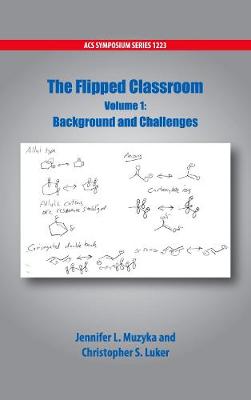ACS Symposium
1 total work
The "flipped classroom" has become the new buzzword not only among educators but also in the general public, with articles in the USA Today, Washington Post, and The New York Times discussing this pedagogical approach. Simply stated, the flipped classroom is a high tech variation on a pedagogical method that has been around for generations. The time honored Socratic method aims to actively engage students with instructors asking them questions, leading them down a
path where they are encouraged to see the connections between ideas. Additionally, flipped classrooms resemble the Thayer method, which expects students to take responsibility for their own learning by studying material before it is covered in class.
Chemistry professors who teach in flipped classrooms embrace a variety of learning theories to guide their implementations. Most chemists who use active learning approaches in their classrooms value some aspect of constructivism theory, in which learners must begin their understanding of the concepts in their pre-class assignments. Later, students apply the concepts in class using active learning methods. For this book, the authors define the flipped classroom as one where students gain
exposure to course content before class and the face-to-face time involves active learning.
The call for and relevance of larger reform efforts in chemical education is not new and this book represents a continuation in the possibilities in achieving reform and meeting the goals of improving students' knowledge of chemistry. Muzyka and Luker provide a deeper, more encompassing picture of the cognitive and affective benefits of this pedagogy.
path where they are encouraged to see the connections between ideas. Additionally, flipped classrooms resemble the Thayer method, which expects students to take responsibility for their own learning by studying material before it is covered in class.
Chemistry professors who teach in flipped classrooms embrace a variety of learning theories to guide their implementations. Most chemists who use active learning approaches in their classrooms value some aspect of constructivism theory, in which learners must begin their understanding of the concepts in their pre-class assignments. Later, students apply the concepts in class using active learning methods. For this book, the authors define the flipped classroom as one where students gain
exposure to course content before class and the face-to-face time involves active learning.
The call for and relevance of larger reform efforts in chemical education is not new and this book represents a continuation in the possibilities in achieving reform and meeting the goals of improving students' knowledge of chemistry. Muzyka and Luker provide a deeper, more encompassing picture of the cognitive and affective benefits of this pedagogy.
